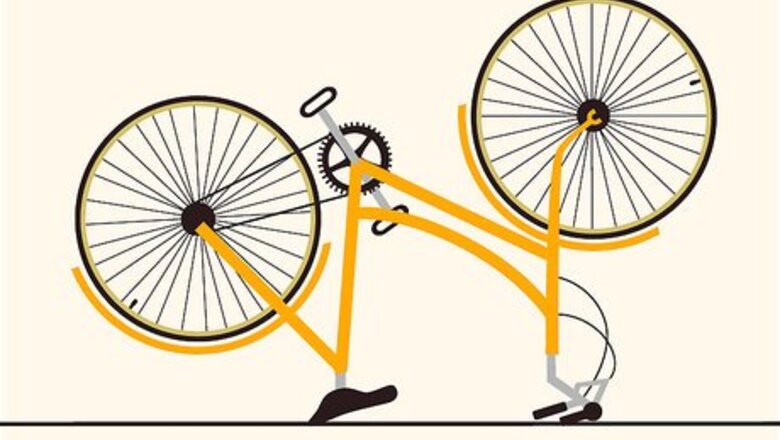
views
Inspecting the Chain
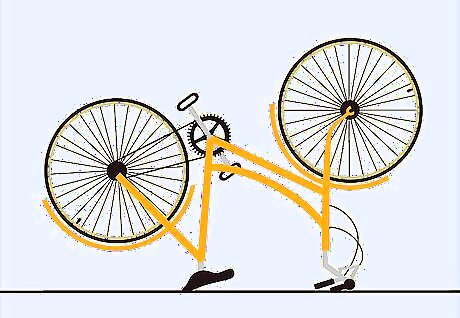
Turn the bike upside or secure it in a bike rack. It’s unlikely that a kickstand will be stable enough to keep your bike upright while removing rust from the chain. Instead, hang your bike on a rack or turn it upside down so it rests sturdily on the seat and handlebars. If you have a nice bike, you may want to lay a drop cloth in between your bike and the ground so you don't scratch its paint job. Bike racks are relatively easy to make from scrap parts. Make a stable frame equipped with hooks and hang your bike by its wheels. Hanging your bike in a rack or turning it upside down has the added bonus of making the chain more accessible as you work on it.
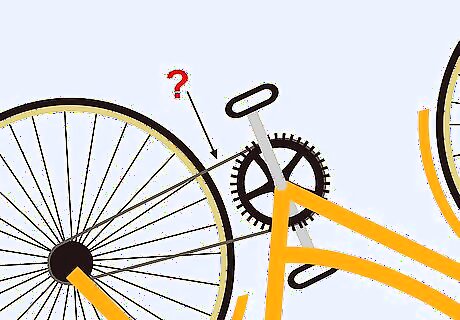
Evaluate the condition of the chain. Take a look at your chain up close. If you notice warping, imperfections in the metal, or similar deterioration, you and your bike will be better off with a new chain. Surface rust, buildup, and crustiness can all be removed so your chain runs like new. To ensure the longest life and best operation of bike chains, avid cyclists should clean their chain once a week or roughly once every 200 miles (321 km). Keeping your chain cleaned and lubed will help maintain the condition of your chain and drivetrain. It will also help you notice damaged links sooner. Replace bad links straightaway to prevent further damage. EXPERT TIP Jonas Jackel Jonas Jackel Owner, Huckleberry Bicycles Jonas Jackel is the Owner of Huckleberry Bicycles, a bicycle retail store based in San Francisco, California. Jonas has over 20 years of experience managing bicycle retail stores and has operated Huckleberry Bicycles since 2011. Huckleberry Bicycles specializes in servicing, repairing, and custom building road, cross, gravel, touring, folding, and e-bikes. Jonas was also previously sat on the Board of Directors for Bike East Bay, a bicycle-advocacy non-profit organization based in Oakland, California. Jonas Jackel Jonas Jackel Owner, Huckleberry Bicycles Expert Trick: Measure the chain to determine when it's time to replace it. As the chain on your bike wears out, it gets longer, because there's more play around the rivets and rollers holding the chain together. Then, as the chain stretches and changes its shape, it will start to wear that different shape into the gears on your bike, so you'll have to replace the whole drivetrain if you wait too long to get a new chain.
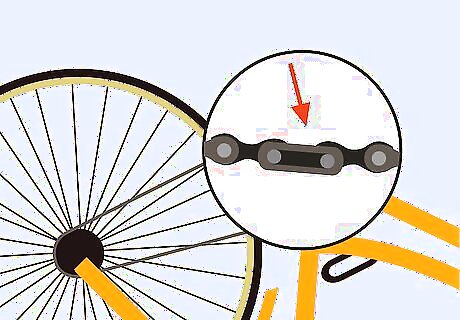
Locate the master link on the chain, if applicable. Many modern chains come equipped with a master link. This is a special link on the chain that makes it easier to remove. Look for links that have a special pin/slot connection, where the pin of one link fits snugly into a slot on the connecting link. Many kinds of single speed bike will not have a master link. If the link is not clearly visible, chances are your chain doesn't have one. If you happen to have a bike chain without a master link, consider having a local bike shop add one for you. This process usually only costs around $15 for most bikes.
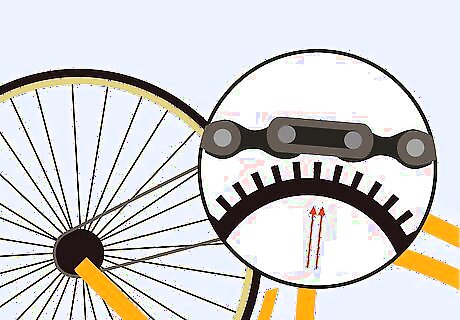
Snap a picture of the drivetrain to make reassembly easier. It’s important that you reinsert your bike chain in the drivetrain correctly. To make reassembly easier on yourself, take a few pics from various angles of the chain, the gears, and the sprockets before removing the chain. Bikes with multiple gears often have complicated shifting mechanisms at the wheels. If this is the case for your bike, make sure your photos clearly depict how the chain runs through these parts. Failing to properly reinstall your chain in the drivetrain could cause serious damage to your bike, personal injury, or it could result the bike not working at all.
Cleaning Surface Rust
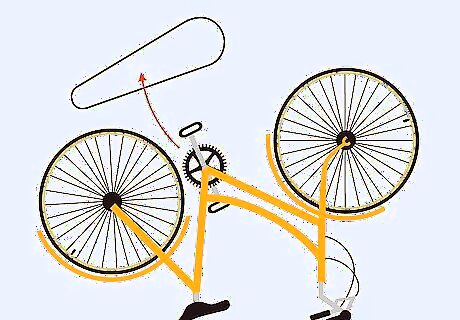
Remove the chain if it has heavy surface rust. If your chain has a master link, use your hands to slide the pin out of the slot in which it’s seated. When the chain disengages, pull it free. Without a master link, you’ll need to jump a link off one of the gear spikes. After the first link, the rest should come off easily, then pull the chain out of the drivetrain. Removing the chain is especially important for chains with heavy surface rust and grime. Chains with light rust and dirtiness can often be cleaned with the chain attached. Chains without a master link are reinserted into the drivetrain in the same fashion they are removed, only in reverse.
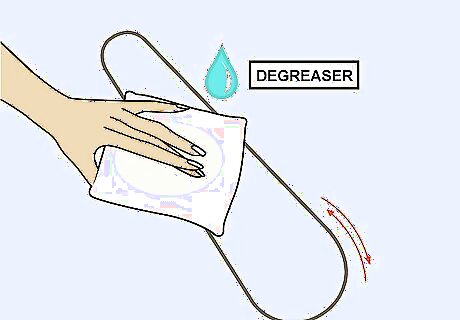
Run the chain through a rag wet with degreaser. Dampen a clean rag with degreaser. Pull the chain through the rag to remove buildup and grease. Stubborn buildup might need a vigorous scrubbing or buffing with the rag before it comes free.

Soak chains with heavy grime and buildup in degreaser for 20 minutes. For severe buildup, you may need to soak your chain in degreaser. Fill a bottle with degreaser, allow the chain to soak in it for 20 minutes, then rinse the chain in a second bottle filled with hot water. Most degreasers can be quite harsh on the skin. Wear latex gloves when using a degreaser unless otherwise indicated on its label
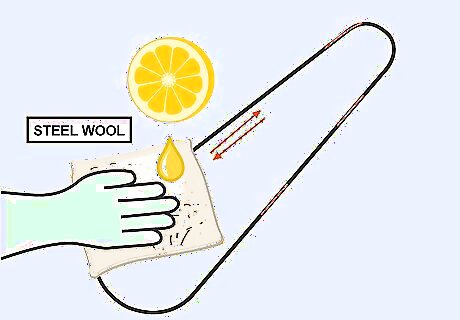
Scrub away light rust with steel wool wet with lime juice. This de-rusting technique can be rough on the hands, so slip on some latex gloves before you try it. Next, wet a piece of steel wool thoroughly with lime juice. Scrub rusted areas with the steel wool to remove rust, then wipe the surface clean with paper towel. Rust that is neutralized and scrubbed free may gunk up your steel wool. If this happens, rinse it in hot water, reapply the lime juice, and continue scrubbing. When breaking up large amounts of rust, you may need to wipe the surface periodically so you can see how much rust is left on the surface.
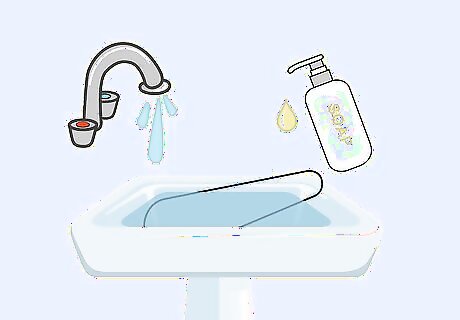
Rinse away lime juice with soapy water after removing rust. Lime juice contains a good amount of sugar. You won’t want this drying on your chain and gumming up the works, so make sure to rinse the chain in warm or hot water mixed with a little dish soap.
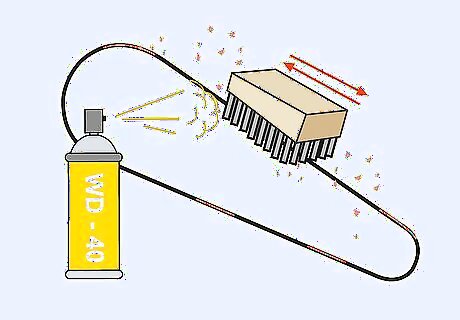
Break up tough rust with WD-40 and a wire brush. Spray WD-40 directly onto the clean, rusted surfaces of your chain in sections. Allow this to sit for a moment so the solution can soak in. After that, take a wire brush and briskly scrub away the rust. Wipe off the chain with a clean rag as necessary to remove rust residue. When the rust is gone, you’re ready to reattach and/or lubricate the chain. WD-40 should never be used to lubricate the chain of your bike. You should only use a specially formulated bike lubricant for this purpose.
Reattaching the Chain
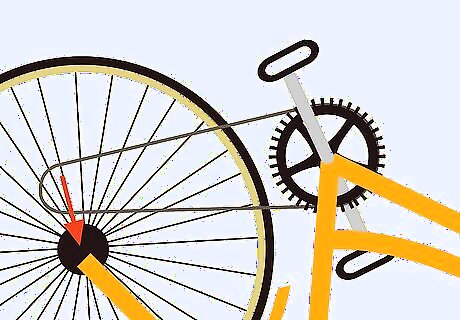
Replace the chain in the drivetrain. This process will depend on the kind of bike and chain you have. The pictures you took earlier of your drivetrain should be helpful. Thread one end of the chain through the drivetrain so it meets its opposite end at the top or bottom midpoint between the wheels. Chain links should fit onto the points of gears and run smoothly through all component parts of the drivetrain. If you feel resistance, it’s likely you’ve inserted the chain improperly. If you find yourself really struggling to get the chain back in the drivetrain, look up a tutorial on YouTube or do a keyword search for your bike’s manual online.
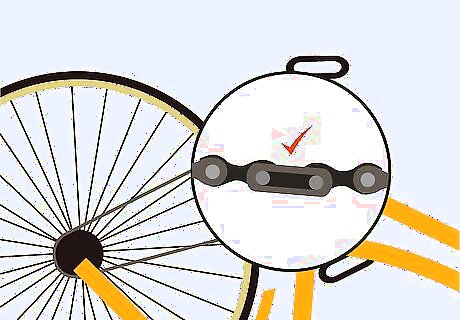
Refasten the master link. Use your fingers to bring the ends of the chain together at the midpoint between the wheels. Slide the pin end-link into the slot of the opposite end-link. In many cases, you’ll feel the link click into place. When properly refastened, the master link should align evenly with other links. If the master link is fastened unevenly, it could cause the chain to warp, ruining it.
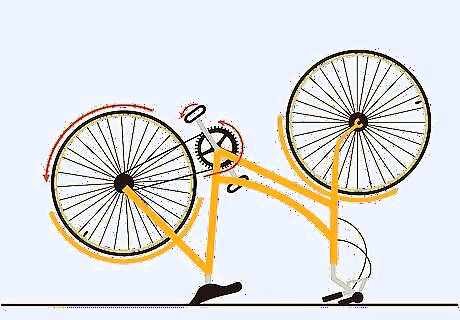
Check the motion of the chain. With the master link connected, you’re finally ready to give the wheels a spin. The chain should pass smoothly through the drivetrain. If there is unnatural resistance or irregular noises from the chain (like groaning, scraping, or grinding), you may have reinstalled the chain incorrectly. Many small errors can be corrected with your fingers while the chain is still on the bike. In some cases, you may need to remove the chain completely and reinstall it from scratch.
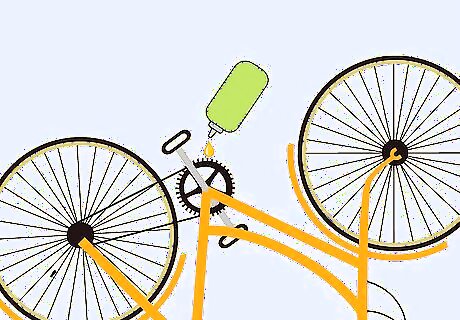
Lube the chain. A quality chain lube will protect your chain from further rusting and the buildup of grime. Position the nozzle of the lube above the midpoint of the chain. While squeezing out a thin, steady stream, spin the wheels of the bike. When the chain returns to its starting position, it’s lubed and ready to ride.



















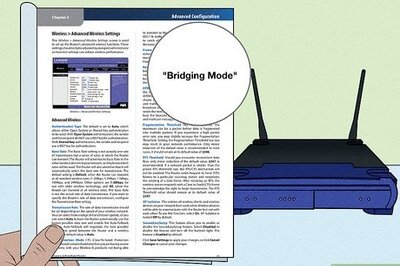
Comments
0 comment